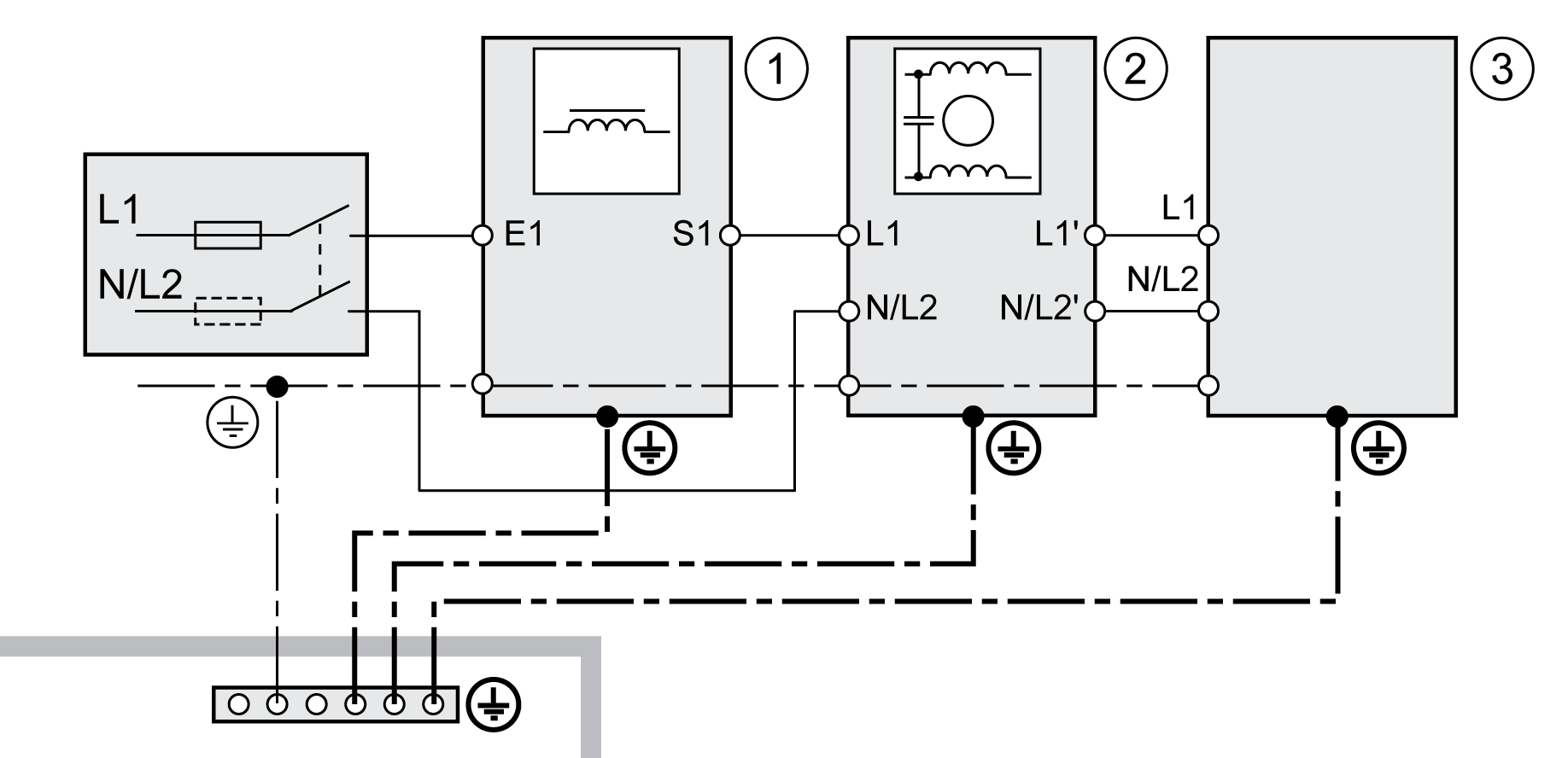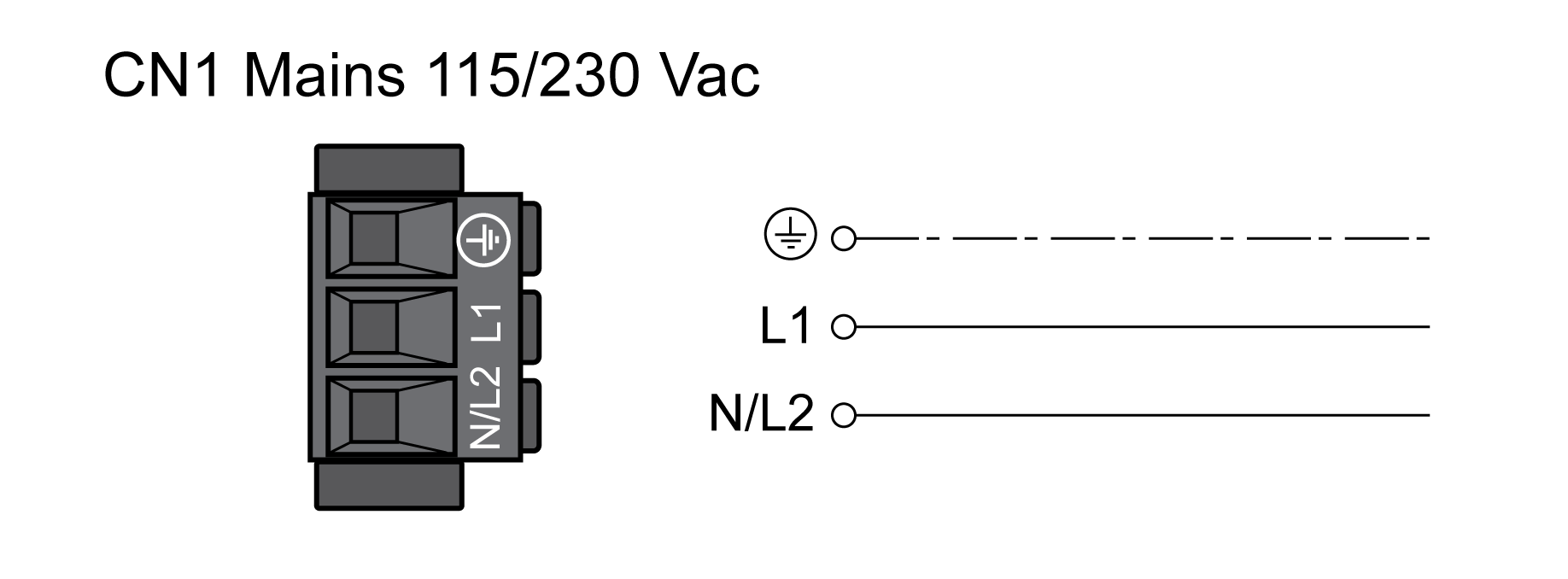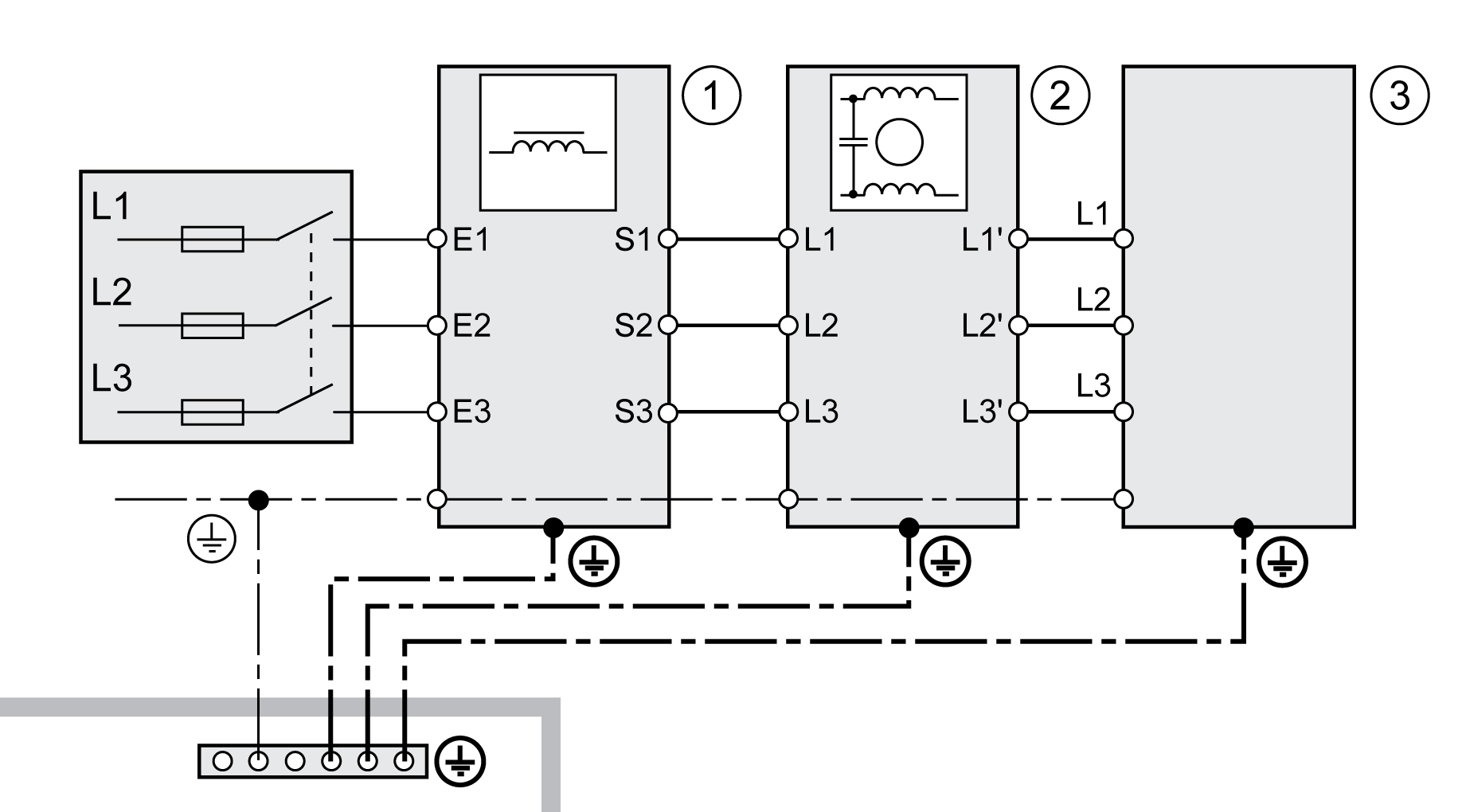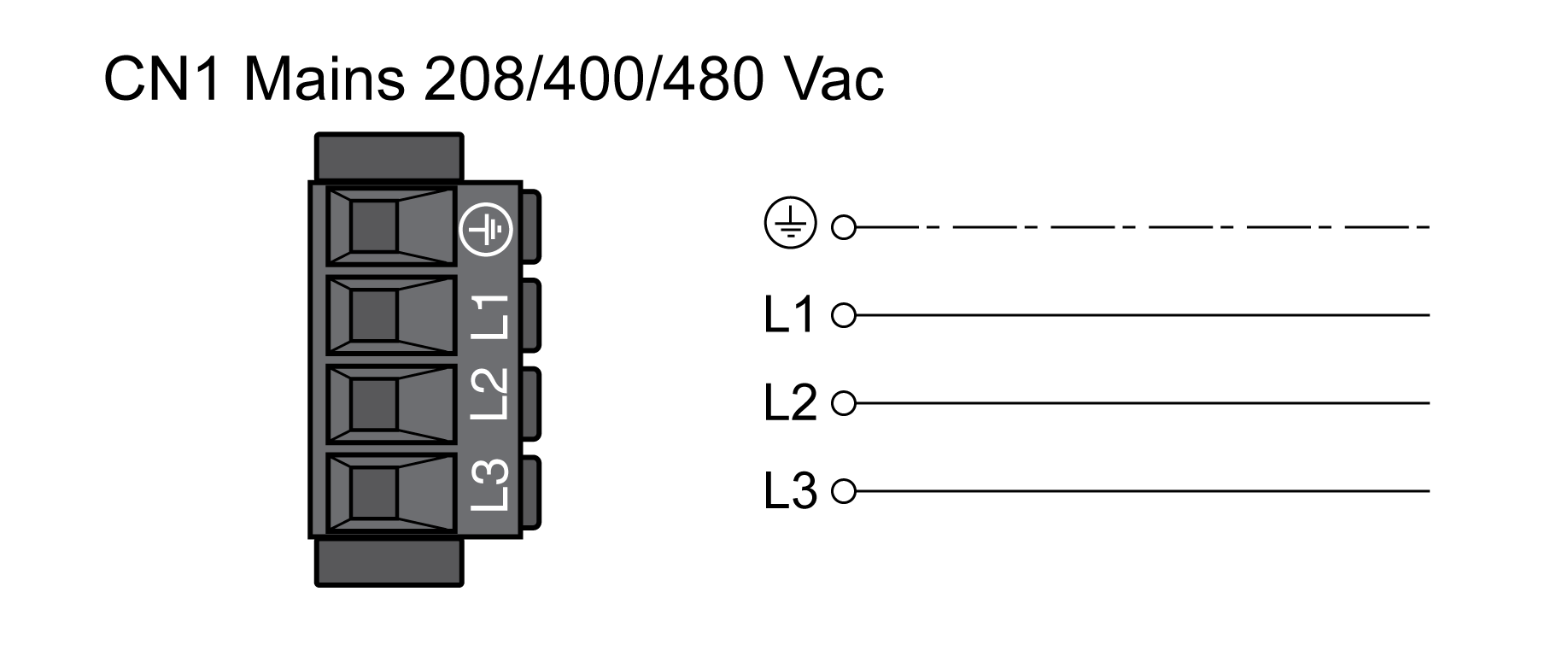Connection Power Stage Supply (CN1)
General
This product has a leakage current greater than 3.5 mA. If the protective ground connection is interrupted, a hazardous touch current may flow if the housing is touched.
| DANGER | |
|---|---|
| WARNING | |
|---|---|
| WARNING | |
|---|---|
The products are intended for industrial use and may only be operated with a permanently installed connection.
Prior to connecting the drive, verify the approved mains types, see Power Stage Data - General.
Cable Specifications
|
Shield: |
- |
|
Twisted Pair: |
- |
|
PELV: |
- |
|
Cable composition: |
The conductors must have a sufficiently large cross section so that the fuse at the mains connection can protect the equipment if necessary. |
|
Maximum cable length: |
- |
Properties of Connection Terminals CN1
|
Characteristic |
Unit |
Value |
|
|---|---|---|---|
|
LXM32•U45, LXM32•U60, LXM32•U90, LXM32•D12, LXM32•D18, LXM32•D30 |
LXM32•D72 |
||
|
Connection cross section |
mm2 (AWG) |
0.75 ... 5.3 (18 ... 10) |
0.75 ... 10 (18 ... 8) |
|
Tightening torque for terminal screws |
Nm (lb.in) |
0.68 (6.0) |
1.81 (16.0) |
|
Stripping length |
mm (in) |
6 ... 7 (0.24 ... 0.28) |
8 ... 9 (0.31 ... 0.35) |
The terminals are approved for stranded conductors and solid conductors. Use wire cable ends (ferrules), if possible.
Prerequisites for Connecting the Power Stage Supply
Note the following information:
-
Three-phase drives may only be connected and operated via three phases.
-
Use upstream mains fuses.
-
If you use an external mains filter, the mains cable must be shielded and grounded at both ends if the length between the external mains filter and the drive exceeds 200 mm (7.87 in).
-
See section Conditions for UL 508C and CSA for a UL-compliant design.
Power Stage Supply Single-Phase Drive
The illustration shows an overview for wiring the power stage supply for a single-phase drive. The illustration also shows an external mains filter and a mains reactor which are available as accessories.
Overview power stage supply for single-phase drive

1 Mains reactor (accessory)
2 External mains filter (accessory)
3 Drive
Wiring diagram power stage supply for single-phase drive.

-
Verify the type of mains. See section Power Stage Data - General for the approved types of mains.
-
Connect the mains cable. Note the tightening torque specified for the terminal screws.
-
Verify that the connector locks snap in properly.
Power Stage Supply Three-Phase Drive
The illustration shows an overview for wiring the power stage supply for a three-phase drive. The illustration also shows an external mains filter and a mains reactor which are available as accessories.
Wiring diagram, power stage supply for three-phase drive.

1 Mains reactor (accessory)
2 External mains filter (accessory)
3 Drive
Wiring diagram power stage supply for three-phase drive.

-
Verify the type of mains. See section Power Stage Data - General for the approved types of mains.
-
Connect the mains cable. Note the tightening torque specified for the terminal screws.
-
Verify that the connector locks snap in properly.